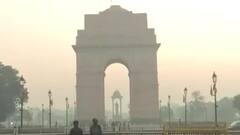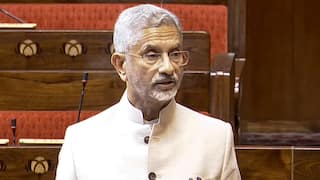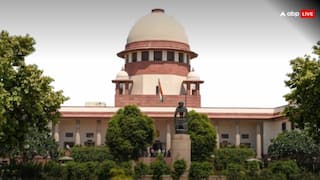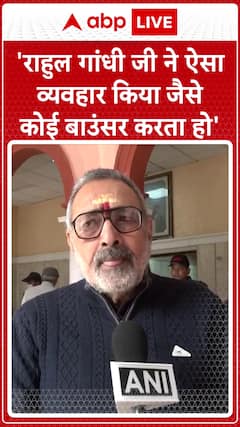Fact Check: Old, Revoked Nashik Police Ban On 'Hindu Songs Near Mosques' Shared As Recent
The viral video surfaced in the lead-up to the Maharashtra Legislative Assembly elections set to take place on November 20, 2024, followed by the counting of votes on November 23, 2024.

The Verdict [Misleading]
The viral video is from 2022 and no recent directive was issued by Nashik Police to ban Hindu devotional songs near mosques or during azan.
What is the claim?
A video circulating online claims that the Nashik Police, a law enforcement agency in the western Indian state of Maharashtra, has issued an order to ban Hindu devotional songs from being played near mosques or during and after the azan (a call to pray in Islam).
The 29-second video features a police officer speaking in Hindi. He says, "Bhajans - Kirtans (Hindu devotional songs) will not be allowed to be played within 100 meters of mosques, and 15 minutes before and after the five azans - at 5 in the morning; 1:15 in the afternoon; 5:15 and 6:30 in the evening; and at 8:30 at night."
The video ends with a voiceover in Hindi saying, “This is Maharashtra’s Nashik Police Commissioner."
An X (formerly Twitter) user shared the video and captioned it in Hindi, translating to, "You keep sleeping. Sanatanis (referring to Hindus), just now an order has come from Nashik. This will happen all over India in the coming time. Don’t vote. Let the future of the family and country go into darkness."
Archives of similar claims can be seen here and here.

However, we discovered that the viral video is old, and no such directive has been issued recently. Upon verifying the claim, we found that the video shows Nashik's former Police Commissioner, Deepak Pandey, who issued the controversial directive in April 2022. It was withdrawn a week later after Pandey's transfer.
The viral video surfaced in the lead-up to the Maharashtra Legislative Assembly elections set to take place on November 20, 2024, followed by the counting of votes on November 23, 2024.
What did we find?
A reverse image search of the viral video led us to the original clip (archived here) uploaded by Asian News International, a news agency, on its official YouTube channel on April 18, 2022. The original video surroundings match the now-viral video, which starts at 1:14 seconds mark. This suggests that the viral video is not recent but over two years old.
Before the viral segment in the original video, we can hear Pandey explaining the reasons behind the directive in Hindi. He says the directive is issued to regulate loudspeakers under sections of the Maharashtra Police Act to maintain law and order.
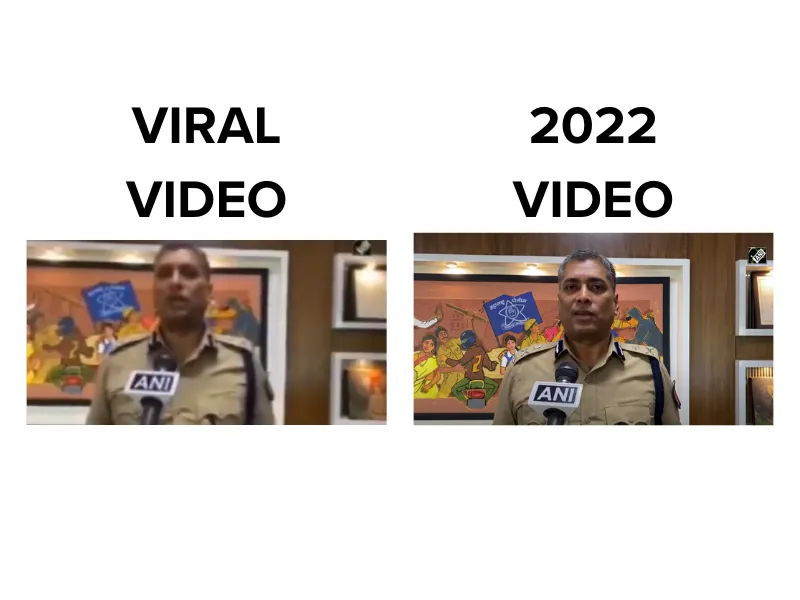
According to a report by The Print in April 2022, the directive was issued by the police authority after controversy over the use of loudspeakers at mosques in Maharashtra. The state's regional political party, the Maharashtra Navnirman Sena, led by Raj Thackeray, had threatened to recite Hanuman Chalisa (Hindu devotional prayer) outside mosques if the state government didn't remove loudspeakers from mosques by May 3, 2022. So, to maintain law and order, the Nashik Police banned any devotional songs around mosques.
However, according to a report by India Today, Pandey was transferred from his post, and the directive was canceled by his successor, Jayant Naiknavare.
Additionally, on October 15, 2024, the Nashik Police, on its X account, issued a statement clarifying that the viral video is old and has been misrepresented as recent. A First Information Report (FIR) has been registered in this regard, the statement said.
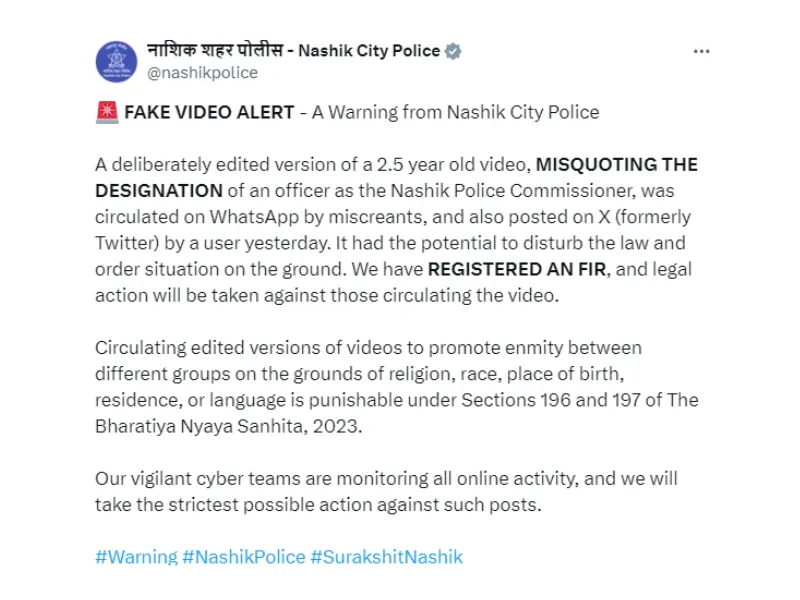
Furthermore, there are no credible reports or official documents about the recent order by the Nashik Police to ban Hindu devotional songs near mosques in Nashik.
The verdict
The video circulating about the Nashik Police's recent directive to ban devotional songs near mosques is misleading. The video is from 2022, and no such directive was issued recently.
(This report first appeared on logicallyfacts.com, and has been republished on ABP Live as part of a special arrangement. ABP Live has edited the headline and feature image of the report while republishing)
Trending News
Top Headlines














